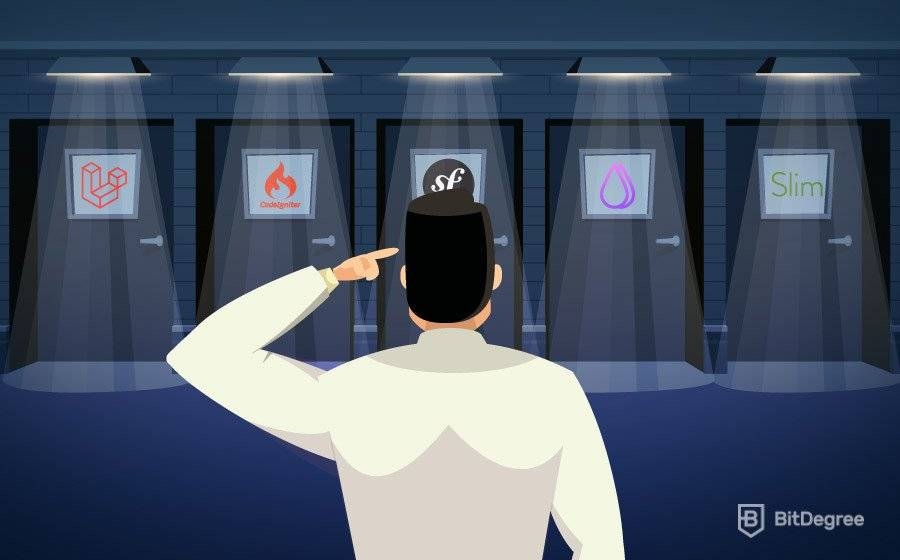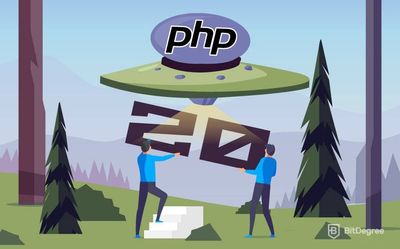Free Airdrop Season 7 is LIVE! Answer fun questions or do simple tasks to earn rewards from the $30K BitDegree prize pool. Participate Now ! 🔥
PHP is the most popular scripting language for backend web development. One of the reasons why PHP has retained its position as the top server-side management language is its advanced frameworks. PHP frameworks are web-oriented, meaning that they help developers build web applications more productively.

In other words, they provide you with a base for the application which can be customized to match your requirements and needs.
Additionally, frameworks such as Laravel, CodeIgniter, Symfony, and others are here to make your web development more efficient, improve scalability (adapting to the growing size of your application), guarantee stability and safety, and prevent repetitive code production.
Table of Contents
Briefly: what is a PHP framework?
Before starting the PHP framework comparison, it is important to define frameworks and their advantages for web development or other programming areas.
Latest Deal Active Right Now:Follow the Datacamp promo code link & get an exclusive 25% OFF Datacamp subscriptions. Act now while the offer is still available!
Programming languages are limited to a certain number of functions or features. To perform actions, you need to write code, find errors, and check whether it fulfills your vision. A framework is a shortcut: you use code provided by someone else. Therefore, instead of having to produce code manually, you take resources from the framework.
PHP frameworks refer to pre-written collections of PHP code that you can use in your project immediately. It is usually the base of applications. Developers further enhance the features themselves, giving the project a unique look.
However, since there are so many PHP libraries to choose from, we aim to discuss the five best PHP frameworks to help you make your decision.
Laravel
Without a doubt, the Laravel framework is the most popular for PHP developers. Ahead of its pack, Laravel ranked as the 10th most popular web framework in 2023. Even though this framework was created in 2011, it managed to climb the ladder to success quickly.
Laravel is an open-source framework, capable of assisting in the production of both small and large PHP projects. It is mostly praised for following the MVC (Model View Controller) architecture, which lets you separate the application into parts, so it does not get confusing.
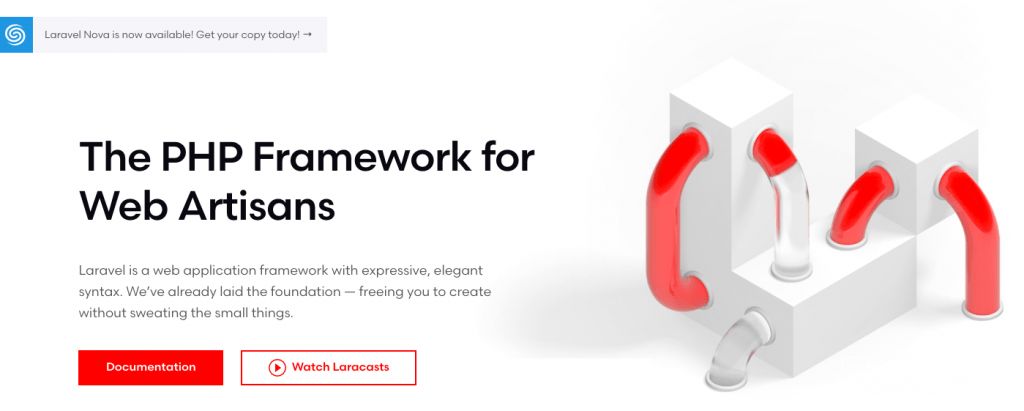
This arrangement is the same as separating HTML from CSS, so the code would not get cluttered and more difficult to follow.
MVC Architecture
In fact, most of the PHP frameworks have adopted the MVC architecture, which divides applications into parts called model, view, and controller:
- The model is the data layer, meaning that it consists of all the data your application controls. The model is the one that retrieves information from a database, puts it in data objects, and transfers them to the targeted location. A simpler explanation is that the model part of the website secures all of its data, processes it, and transfers this information to the end-user.
- The controller is the place that the application communicates with its users. It is standard that the controller accepts requests from the interface and sends data to the model. The model processes data and sends it back to the controller. Then, the controller transfers the results to the view.
- The view is the part of the website, which finally presents data to the end-user after selecting and organizing the information.
Due to the convenient arrangement of application data, many programmers choose to create programs that follow the MVC architecture. Since creating such websites can be complex, PHP frameworks provide the essential elements to start with.
Advantages of using Laravel
Coming back to the Laravel framework, here is a list of features and benefits that you can get:
- Laravel offers lightweight templates that developers can use as a base for their website. These templates can be customized according to developers’ needs.
- One important characteristic of the Laravel framework is that it helps you create secure websites. For instance, it prevents SQL injection for users that apply Fluent Query Builder or Eloquent. SQL injections are one of the most dangerous attacks (and oldest) on the web when hackers taint SQL statements with malicious code and send it through the web page input. The result of such attacks is that confidential information might be stolen, changed, or that hackers can access the operating systems via the database server. Therefore, it is a good thing that Laravel offers protection against SQL injections.
 Eloquent works by improving the way developers manage records in their servers. It automatically transforms table columns into PHP class properties. Therefore, you will be able to update, delete, and add new data to your database without using SQL.
Eloquent works by improving the way developers manage records in their servers. It automatically transforms table columns into PHP class properties. Therefore, you will be able to update, delete, and add new data to your database without using SQL.- A built-in feature is Artisan, helping developers manage repetitive tasks. It makes it easy to write the base for the database structure and handle the migration aspect. Therefore, developers can manage their database systems more efficiently.
- Usually, developers need to produce SQL queries for creating table structures. The Laravel framework uses migration instead. It is similar to Git or other project-management systems that let you revert to the older versions of your project.
- Laravel also makes it easy to secure your website with authentication. This feature highly speeds up the process as Laravel sets authentication with a single line while pure PHP code would take more lines of code (and work).
All in all, you should not be surprised that the Laravel framework is the most popular in the business and even considered as the best PHP framework. It secures websites, makes it easier to manage information in databases, improves scalability, lets you revert to older versions of your project, and, overall, makes the backend web development more enjoyable.
CodeIgniter
CodeIgniter is a PHP MVC framework that also stands out from the rest with its capabilities to guarantee a better web application performance thanks to smaller code volume.

It offers fewer features than Laravel. For instance, CodeIgniter does not have built-in authentication or debugging tools. Therefore, developers need to write code manually.
Sometimes fewer-features translates as more beginner-friendly but we can look at this from a different perspective. Exploring richer PHP frameworks might take longer, but you will be able to exploit more pre-written code for your project. As a result, you won’t have to write as much code yourself.
Why should you choose CodeIgniter?
However, we are not stating that CodeIgniter is not a solid option. Here are the main arguments for choosing this framework as your guide:
- It helps to produce web applications that excel in the performance aspect. CodeIgniter achieves high-speed because it is lightweight as the main system needs only a couple of small libraries.
- The high-performance of CodeIgniter is also related to the fact that this framework does not require developers to use a template engine (a way of embedding backend code into HTML). Since PHP has a built-in feature of embedding code, CodeIgniter believes that the use of additional parsers is unnecessary. Therefore, the web application works faster as there is no need to convert the PHP code.
- This framework also follows the MVC architecture, letting you separate different parts of your website for better management.

- CodeIgniter has explicit documentation, letting beginners learn from official and trustworthy sources.
- CodeIgniter makes sure that URLs are short and more SEO-friendly. Routing refers to the way you set URLs to open a specific page. If a URL does not have a route, it leads to a 404 (not found) error.
- If you find yourself wanting more, CodeIgniter can improve with additional add-ons that provide more features.
- CodeIgniter has Cross-Site Scripting filtering for preventing Cross-Site Request Forgery (CSRF). Such attacks occur when hackers exploit information on websites that users already have authentication.

- Easy to use with a learn-by-doing approach
- Offers quality content
- Gamified in-browser coding experience
- Free certificates of completion
- Focused on data science skills
- Flexible learning timetable

- High-quality courses
- Nanodegree programs
- Student Career services
- Nanodegree programs
- Suitable for enterprises
- Paid certificates of completion

- A wide range of learning programs
- University-level courses
- Easy to navigate
- University-level courses
- Suitable for enterprises
- Verified certificates of completion
Continue learning
If you want to continue learning about CodeIgniter and the way it is used for web development, we recommend checking out our course on this exact topic. Overall, CodeIgnitor is lightweight, does not have many overwhelming features, and helps developers create high-speed web applications. Therefore, it is one of the best PHP frameworks for beginners that do not intend to use more complex features of, for instance, Laravel. This course will help you create web applications with PHP, Bootstrap, and the CodeIgniter framework.
Symfony
The PHP Symfony framework also provides pre-written code for PHP developers. It is highly-useful for large-scale projects, but the framework mostly targets people that have more programming experience.
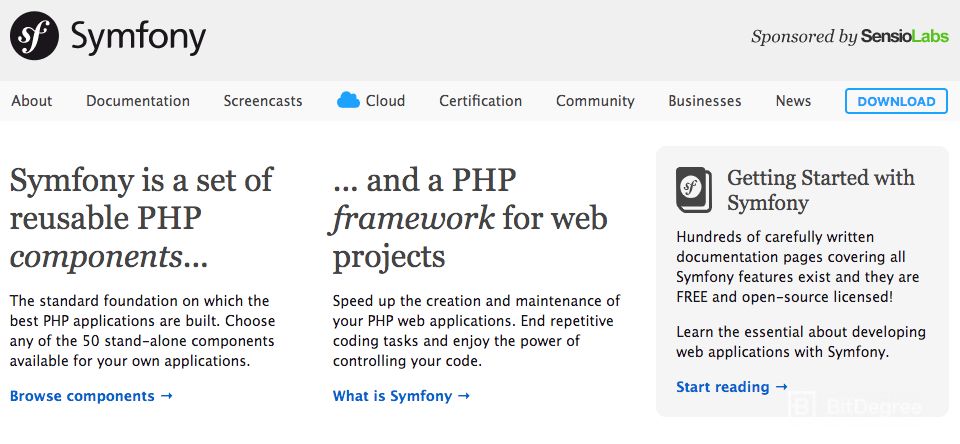
- Therefore, Symfony might not be the best option for beginners that are only starting to master PHP and its quirks.
- This PHP framework is one of the best for large-scale projects.
- PHP Symfony framework offers an easy way of localizing websites and translating interfaces. Therefore, your web application is very adaptable as you will be able to provide, let’s say, English and French versions of your website.
- Symfony offers an SEO-friendly routing system.
- Furthermore, Simfony supports the feature of bundles (similar to plugins), which contain code you intend to reuse for multiple projects. For instance, if you happen to be building an e-Commerce website, you will avoid writing the same code for the next e-Commerce project.
- Symfony also follows the MVC architecture and lets developers divide their web applications into separate sections for better management.
Specialists indicate that it is one of the fastest PHP frameworks. One important tip is to make sure that your application uses PHP 7. This conversion can boost your app speed by 50%. You should follow this advice for every framework mentioned as the PHP 7 introduced many significant improvements, including enhancement of speed.
Zend
Zend is an open-source framework that follows the explained MVC architecture. It will help you create a basic structure for your web application.
The framework is a bit more challenging to learn when compared to Laravel. Therefore, Zend is not as popular since developers have to put more effort to use it properly. Due to its complexity, Zend might not always offer the best performance, but developers mention it among the fast PHP frameworks.
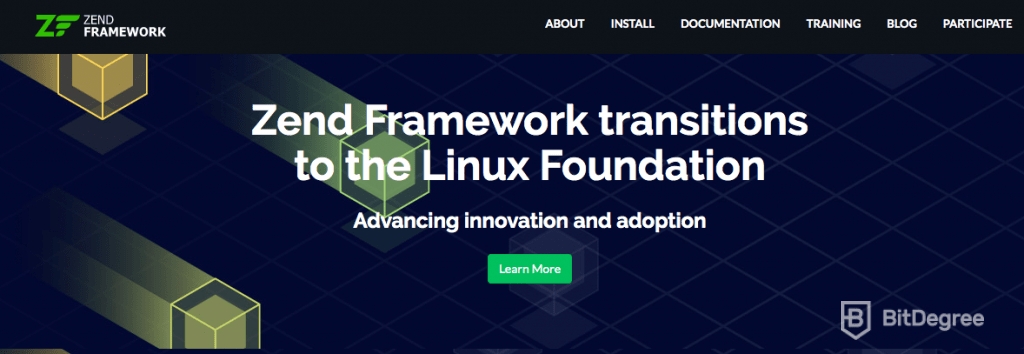
The framework has been responsible for the creation of a wide variety of PHP applications ranging from e-Commerce platforms to healthcare systems and entertainment portals. Here are the main features of Zend:
- It is fully object-oriented. Therefore, the framework follows the basic concepts of object-oriented programming, such as inheritance and interfacing. This feature increases the reusability of code and makes the web development faster.
- New bits of code need to be checked with specific unit tests (using PHPUnit).
- The framework offers many components from classes to objects that are for implementing specific features in your web application.
- It offers great reusability of code since you can make one module inherit properties of other modules and pass the same methods and attributes.
In 2023, it was announced that Zend is becoming an open-source project of the Linux Foundation. The project will be renamed to Laminas.
FuelPHP
FuelPHP framework is also an open-source library introduced in 2011. The creators of this framework want it to be community-driven, meaning that basically anyone can become a contributor. Anyone can report bugs or fix them as well.
The framework follows the HMVC model, which is similar to the regular MVC model. One of the differences is that the controller must choose the model before the view.
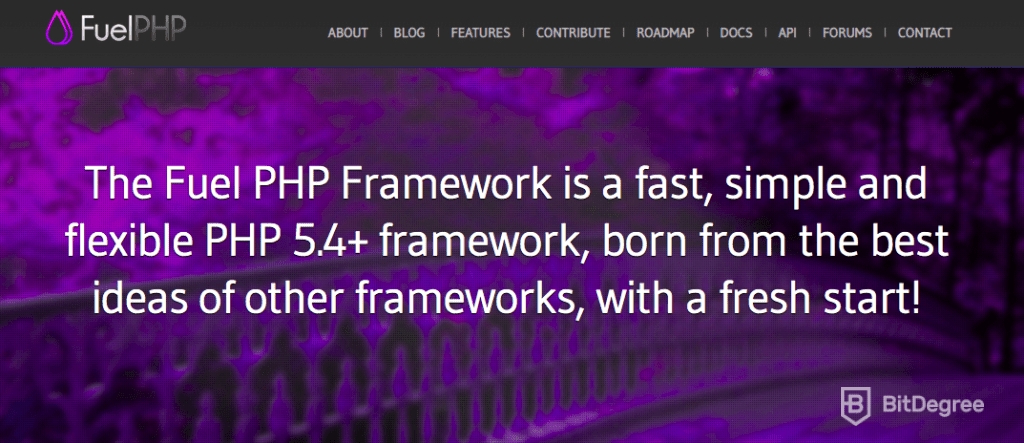
The model prevents the view from accessing the data directly by using an additional authorization step. Furthermore, the HMVC model provides an easier way of showing the same content on multiple pages. This feature results in lower memory usage. One of the most significant advantages of using HMVC is the widgetization of content structures.
Modularity is one of the strongest advantages of FuelPHP. The framework lets developers divide bigger projects into smaller parts referred to as modules. Even though you might develop these modules individually, combining them won’t be difficult. It is also easy to reuse your modules.
Slim
Slim, as it might be implied from its title, is one of the most lightweight PHP frameworks. Differently than the others, Slim does not follow the MVC model. Its purpose is to help developers produce web applications and APIs. Slim is also one of the frameworks referred to as “micro.” The concept of micro frameworks means that a library consists of the bare essential resources for creating a web app.
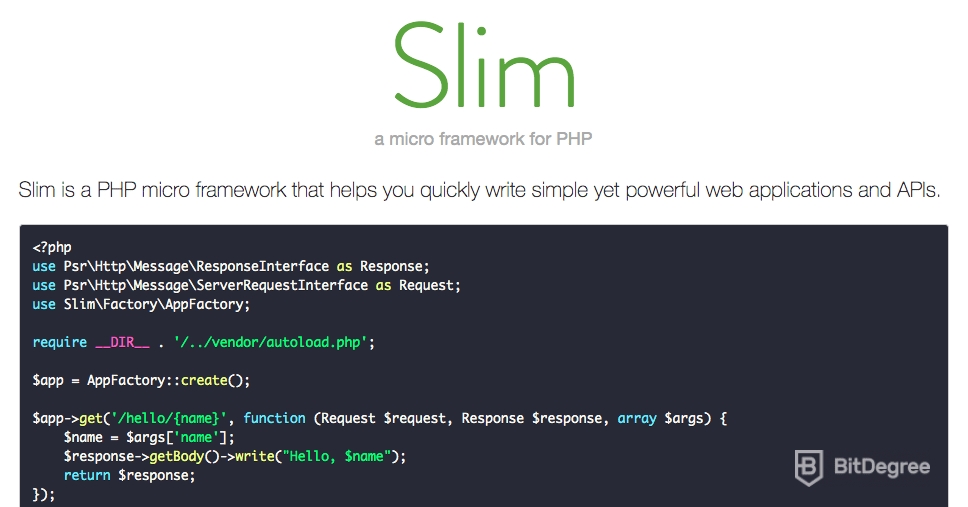
Therefore, most PHP developers should be well-aware of Laravel and Symfony but less familiar with Slim. The reason for not knowing about Slim refers to the fact that programmers usually want frameworks that are large and full-stack. Slim does not offer a huge codebase, which might be a disadvantage for some. However, it does provide enough for producing simple but powerful APIs.
Thanks to its simplicity, using the Slim PHP framework guarantees the fast development of applications. It supports all HTTP methods, manages URL structure with routers, middlewares, flash messages, encrypted cookies, etc.

Did you know?
Have you ever wondered which online learning platforms are the best for your career?
Conclusions
Let’s make conclusions of this PHP framework comparison based on several factors:
- Which PHP framework is best for beginners.
- The best for e-Commerce web applications.
- The choice for speed-sensitive applications.
For beginners, it might be best to choose between Laravel and CodeIgniter. To be clear, we are considering beginners people that know how PHP works, but have not tried to use any frameworks yet. Since these two frameworks are the most popular PHP frameworks, beginners will quickly find tutorials and other useful tips. Additionally, they are excellent choices for starting to work with MVC architecture.
For building e-Commerce websites, it is best to choose Laravel unless your client or company insists that you use a different framework. Laravel is easy-to-use but offers an array of features consisting of high-level security measures that protect websites from hackers.
When it comes to speed, it is best to choose lightweight PHP frameworks such as CodeIgniter or Slim. However, we like to direct your attention to one aspect: the speed of development is also very important when it comes to producing web applications. Therefore, it is best to choose the framework that you are the most comfortable with. You cannot decide this without exploring them and seeing how they work.

